I had been approached by Neal Cohen of Aperture Communications on referral from a recent employer and mutual collaborator, Francis Anderson of NEI. The Bipartisan Policy Center (BPC) was seeking an animated presentation on the topic of Net Zero, a popular environmentalist movement which posits a tenable transition to net zero carbon emissions in the US by gradually reducing emissions and implementing methods of absorbing CO2 from the atmosphere.
BPC had partnered with Decarb America, a research initiative dedicated to achieving Net Zero by the year 2050, to broadcast the Net Zero mission.
BPC had partnered with Decarb America, a research initiative dedicated to achieving Net Zero by the year 2050, to broadcast the Net Zero mission.
This project presented several challenges, chief amongst them was creating a presentation on a highly technical and delicate subject. We worked closely with the folks at BPC to ensure that we were meeting their vision while handling the material appropriately.
The Pitch
Each of these represented a different budget and timeline. Option 1 would be the quickest and cheapest to produce, while 3 would take the longest, and be the most expensive.
It was up to BPC to decide how ambitious they wanted us to be with the concept.
Ultimately we settled on a hybrid between options 1 and 2, for the sake of aesthetic choice as well as budget.
After an introduction to BPC and the Net Zero project, courtesy of Neal, I began by formulating a series of preliminary animation concepts demonstrating different ways we might approach the concept. These were devised from a mix of new assets, as well as ones that I had on file from previous projects.
From here, I put together a production schedule and budget breakdown. Once this was approved, I reached out to several artists in my network, putting together a small team based on their respective artistic strengths, as well as my own.
From here, I put together a production schedule and budget breakdown. Once this was approved, I reached out to several artists in my network, putting together a small team based on their respective artistic strengths, as well as my own.
It began with a script, which I co-wrote with Neal, and Nickelodeon alumni Nick Dossman.
Nick and I breathed new life into the project by fleshing out the transit concept seen in option 2 and introducing a transformation theme.
Nick and I breathed new life into the project by fleshing out the transit concept seen in option 2 and introducing a transformation theme.
Storyboards



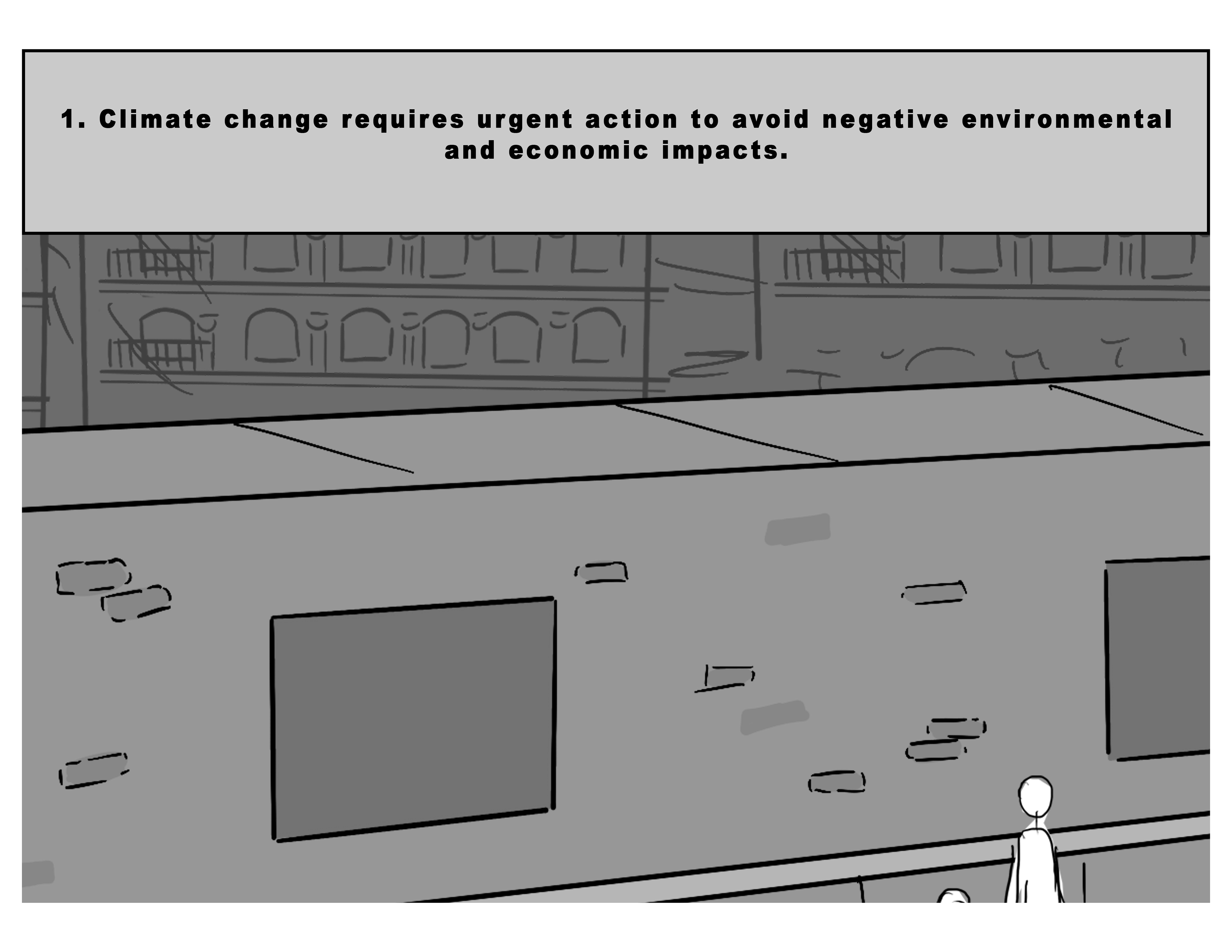
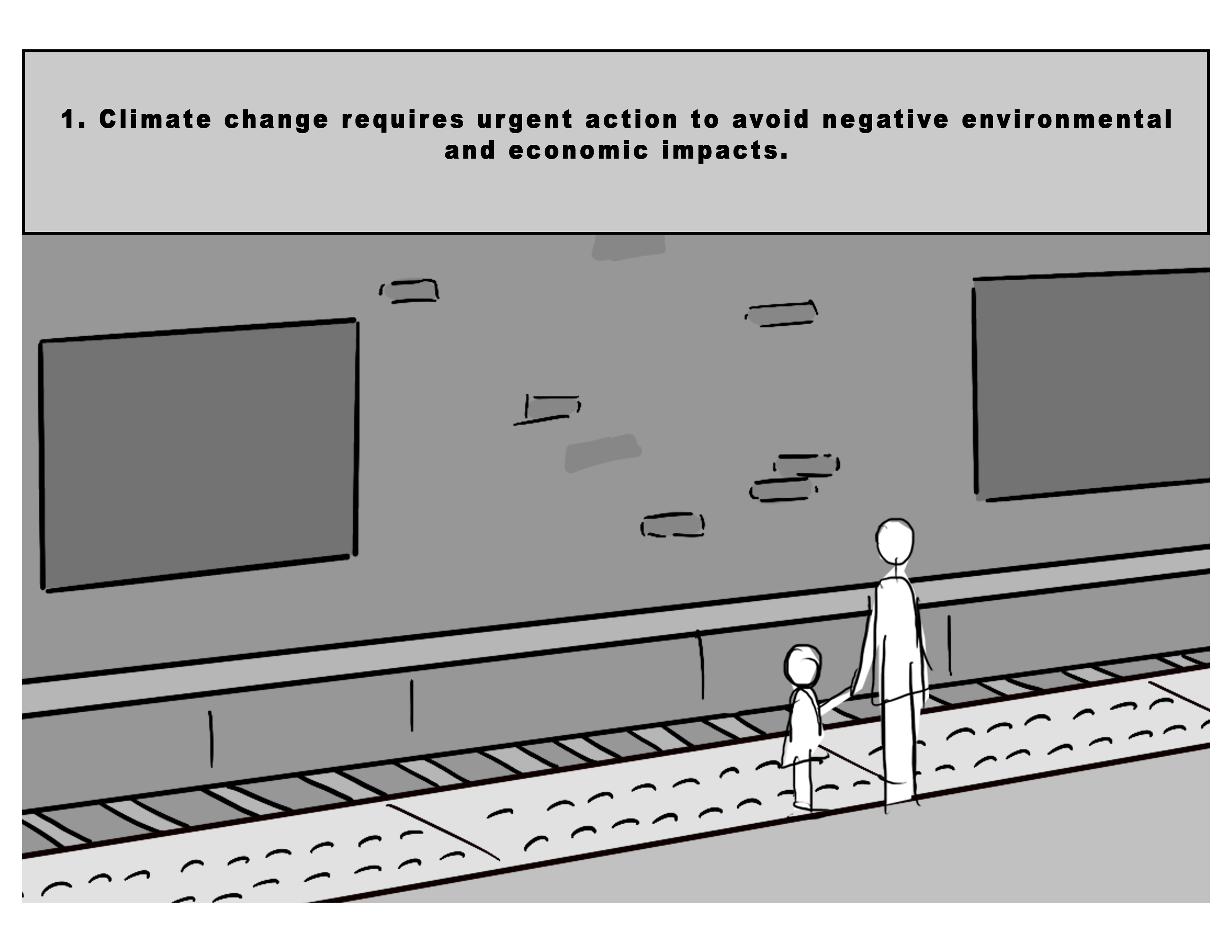

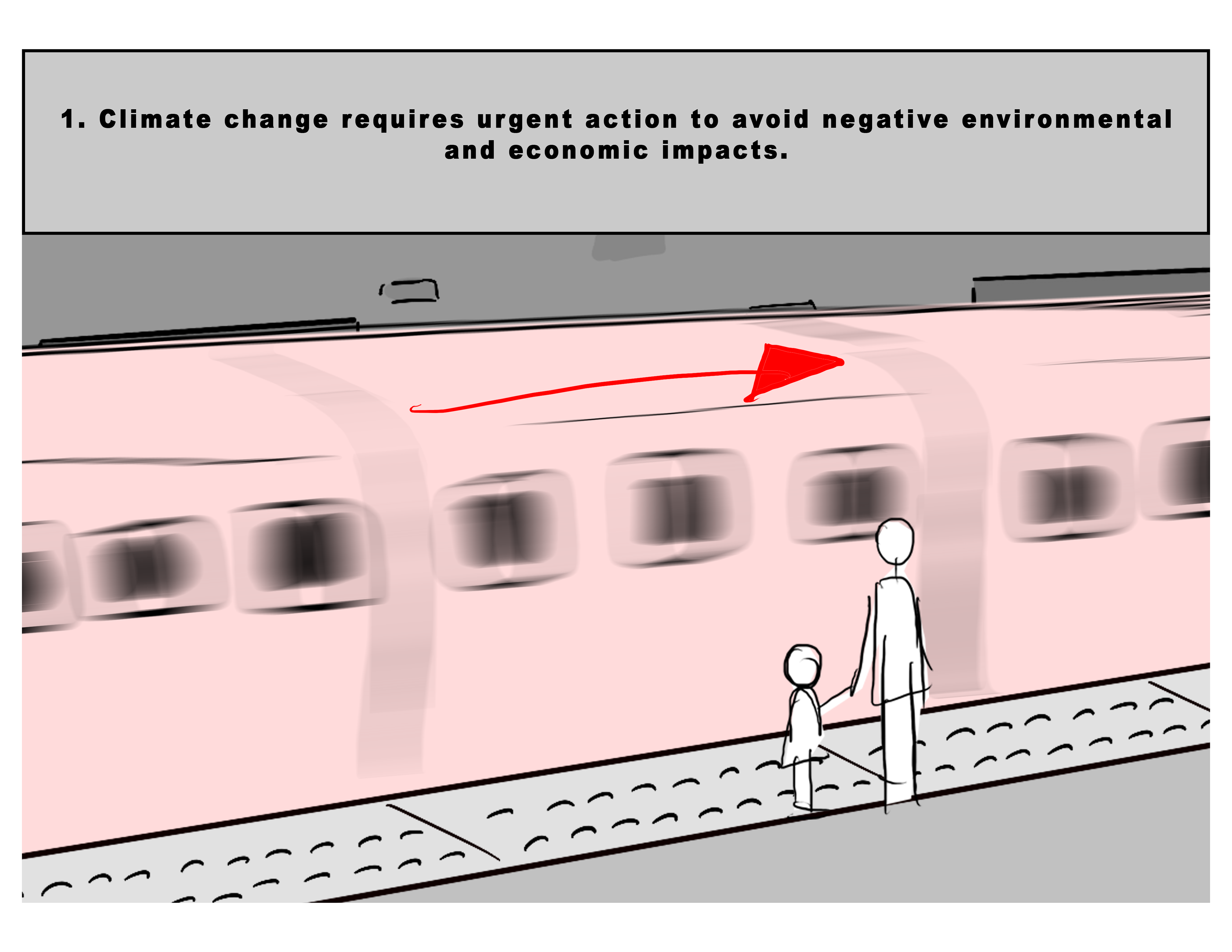

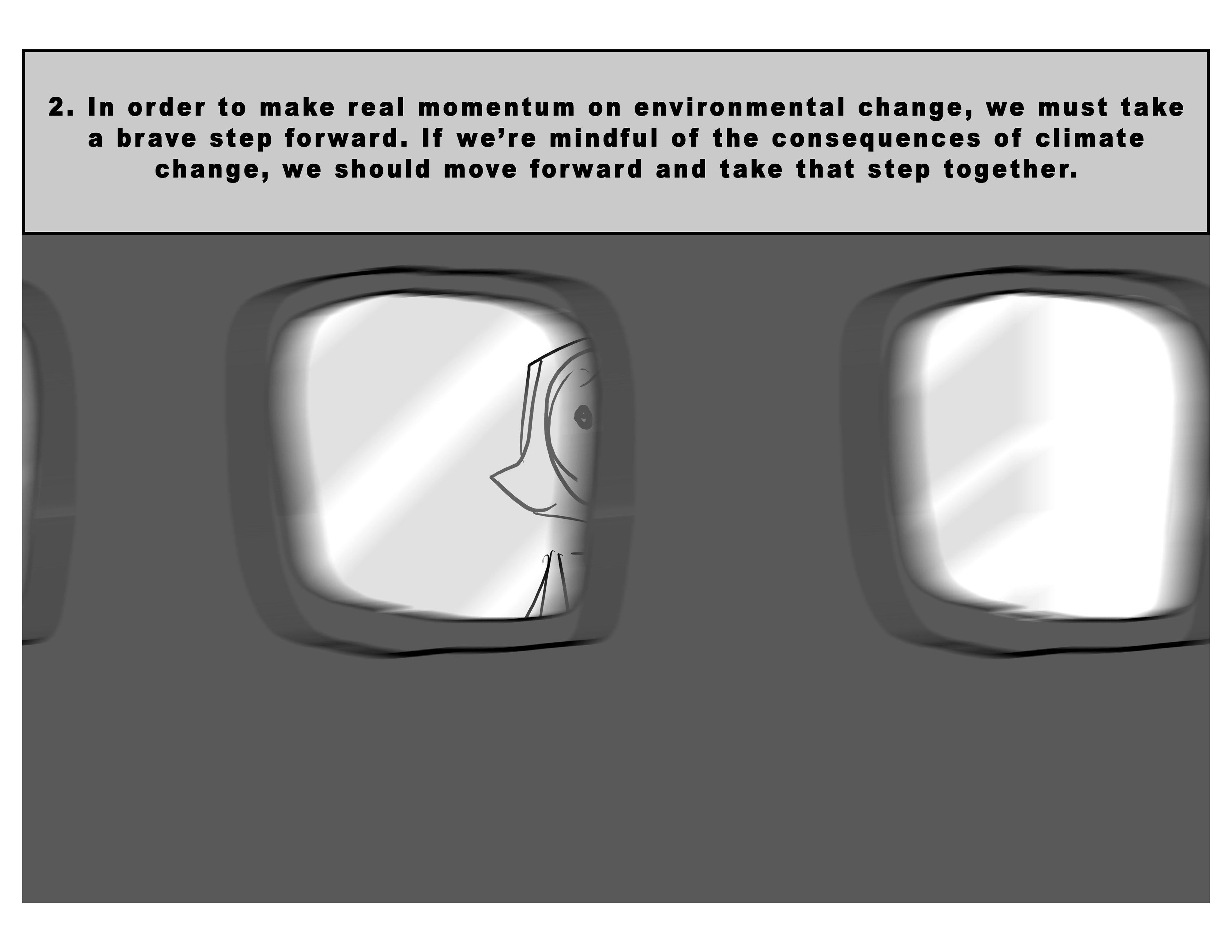


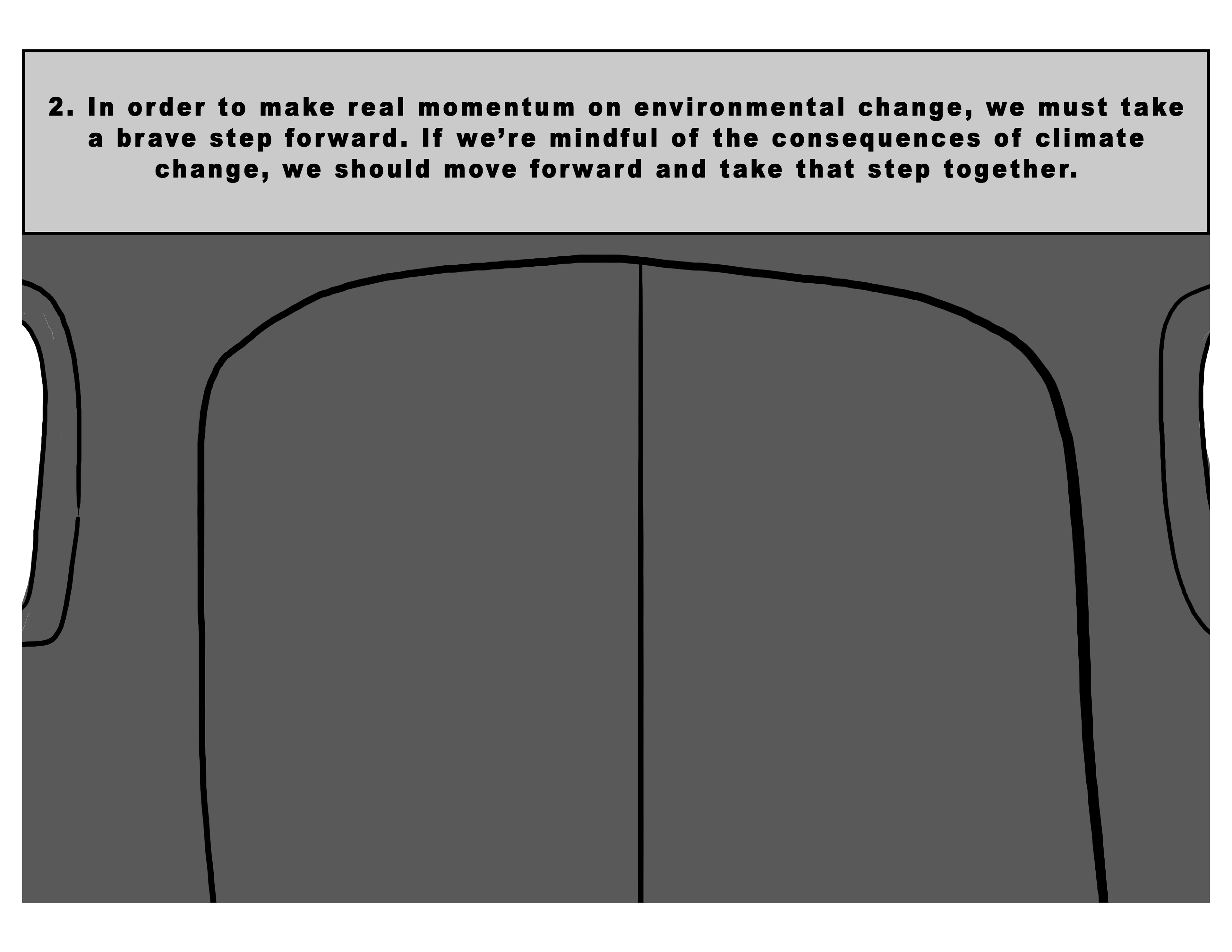
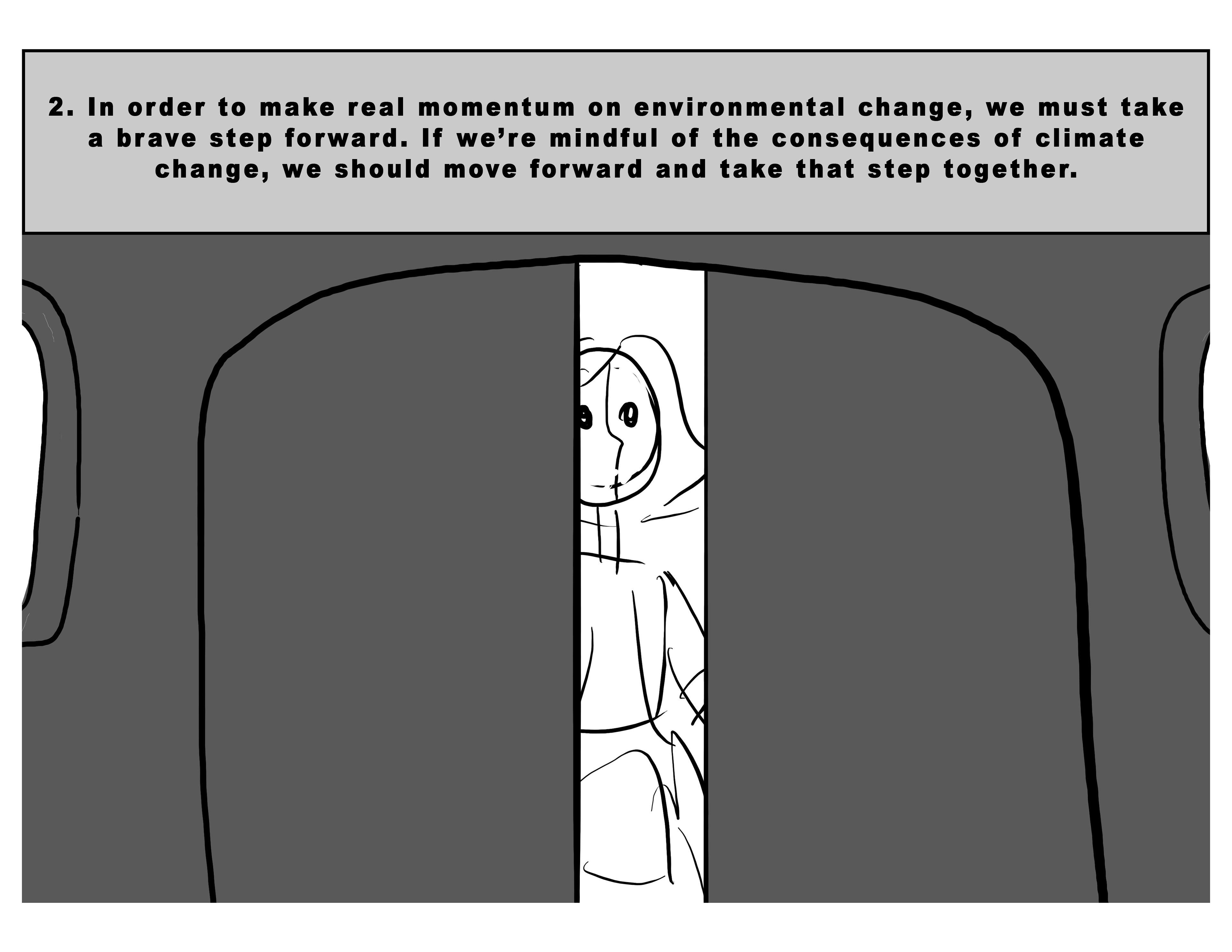




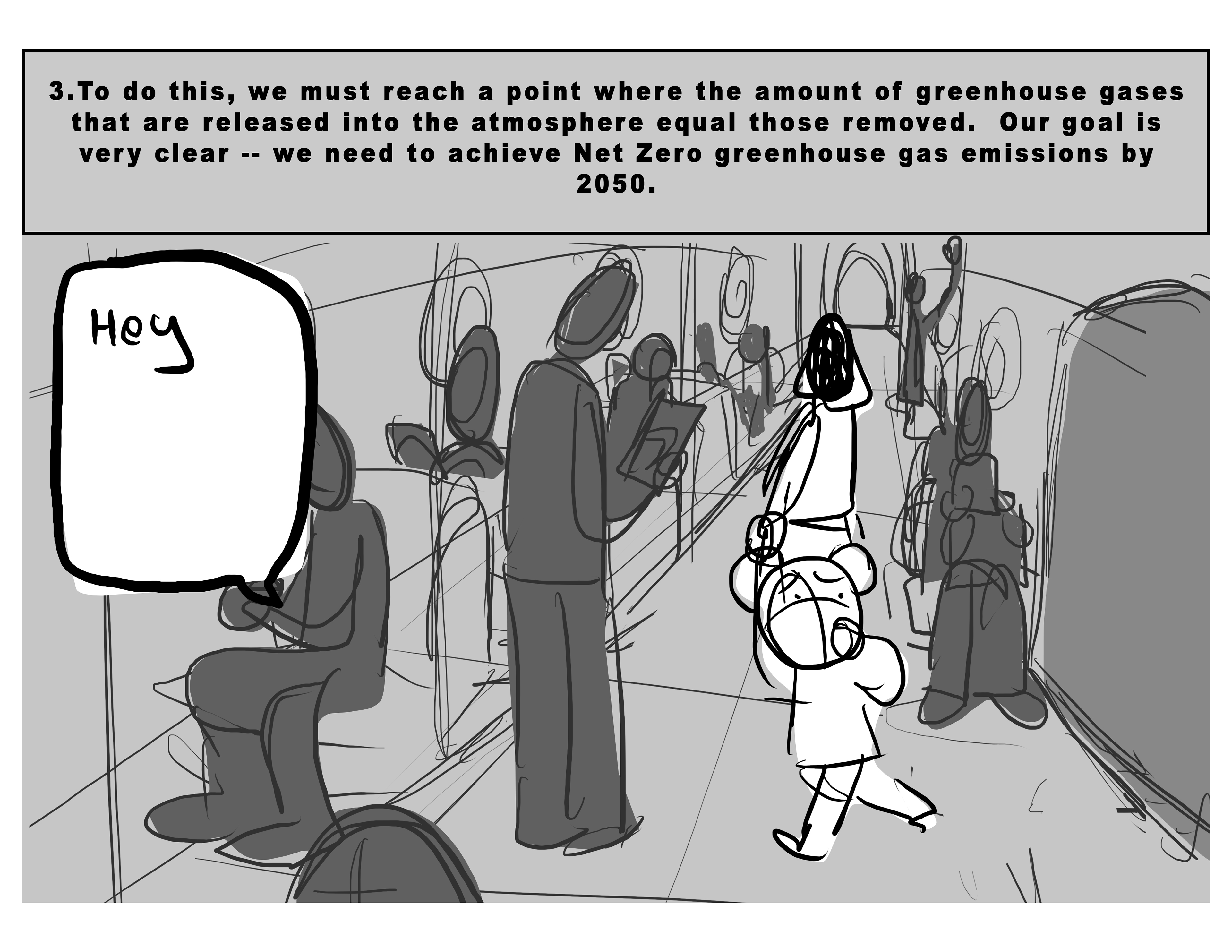

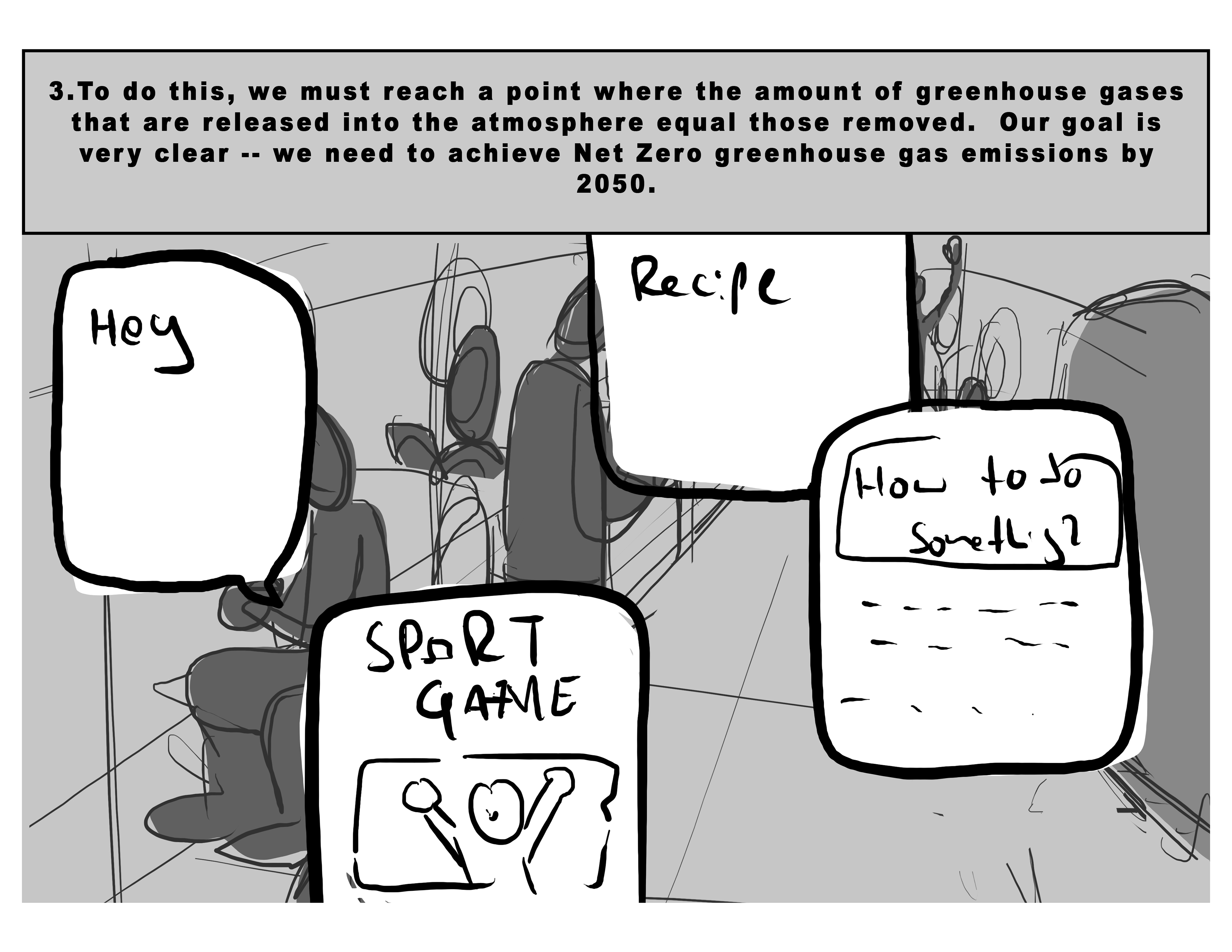
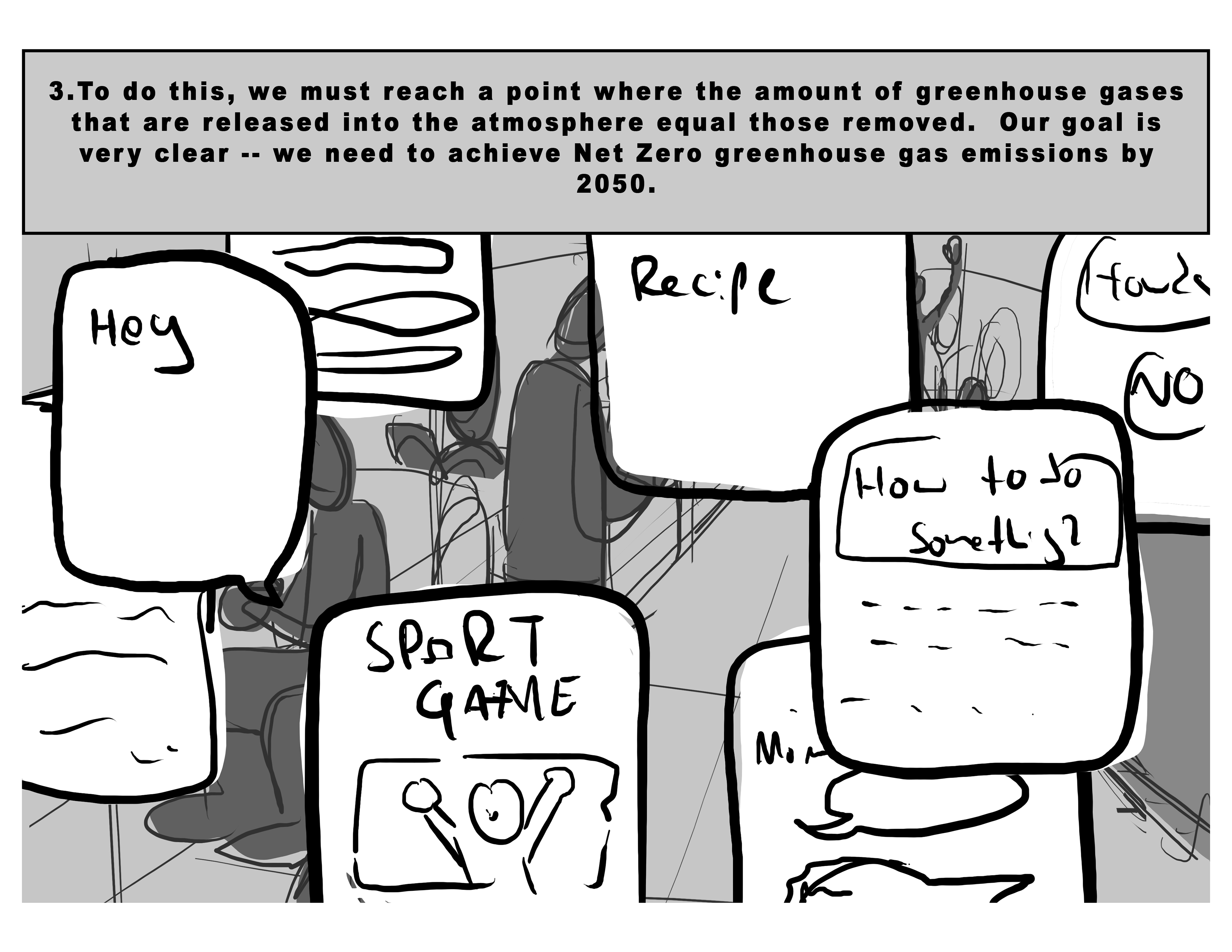





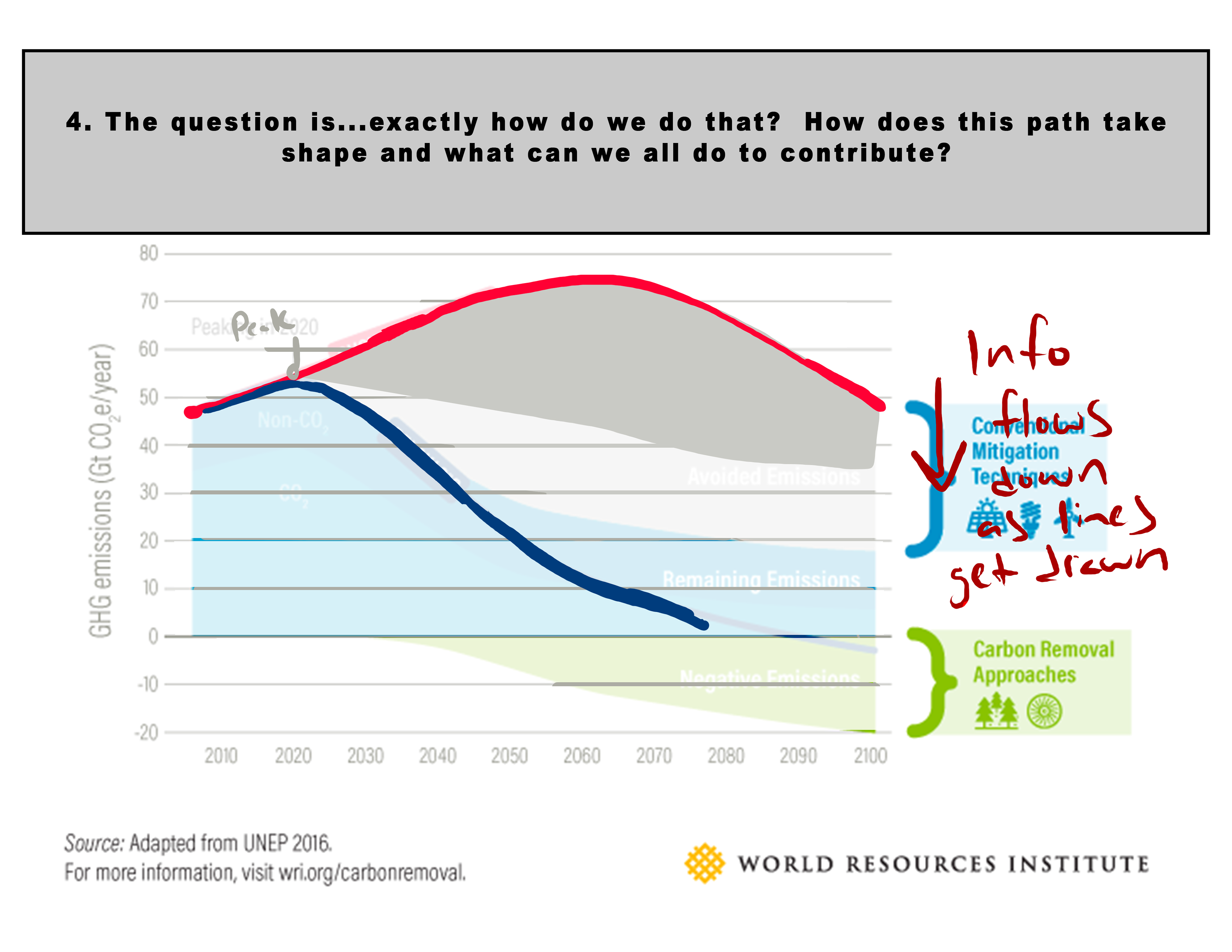

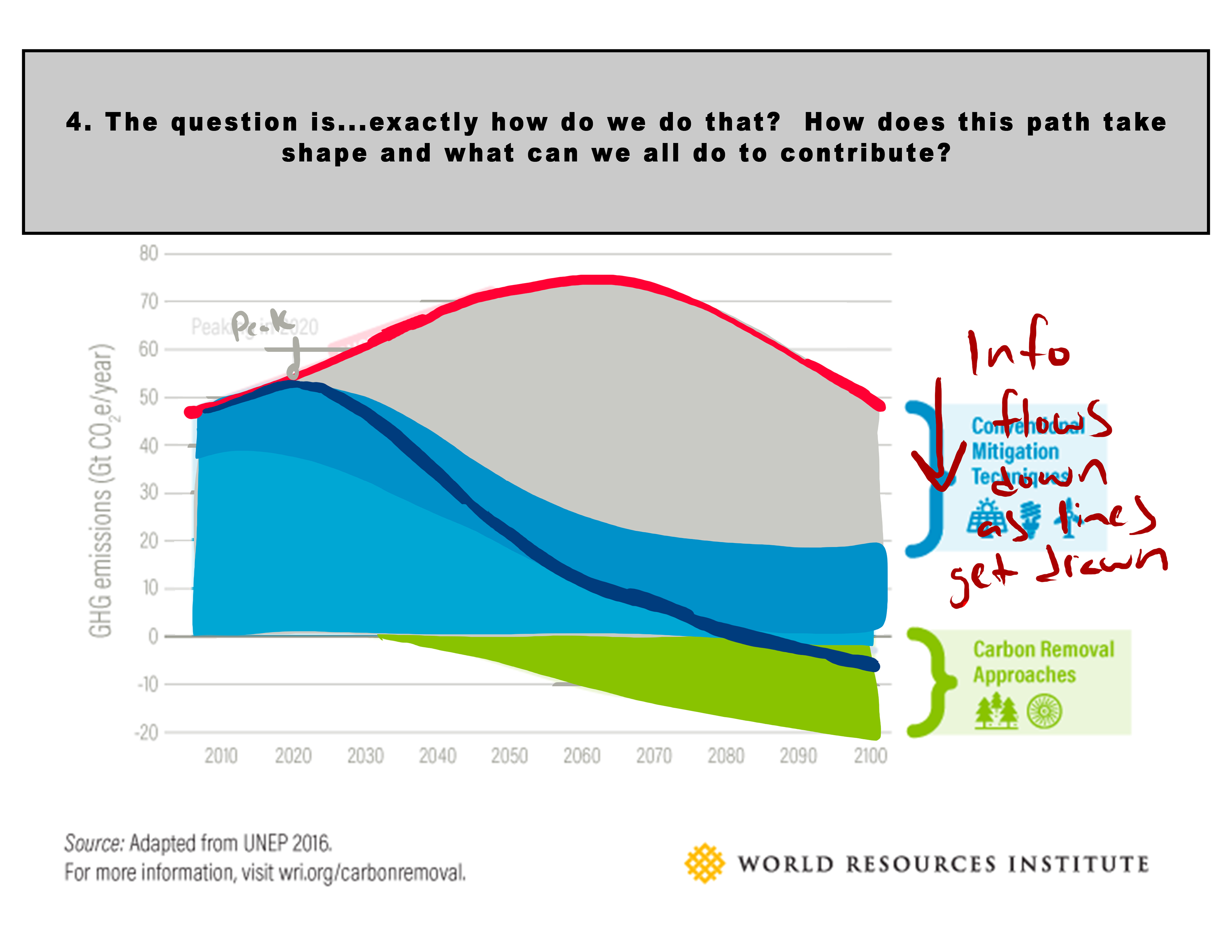

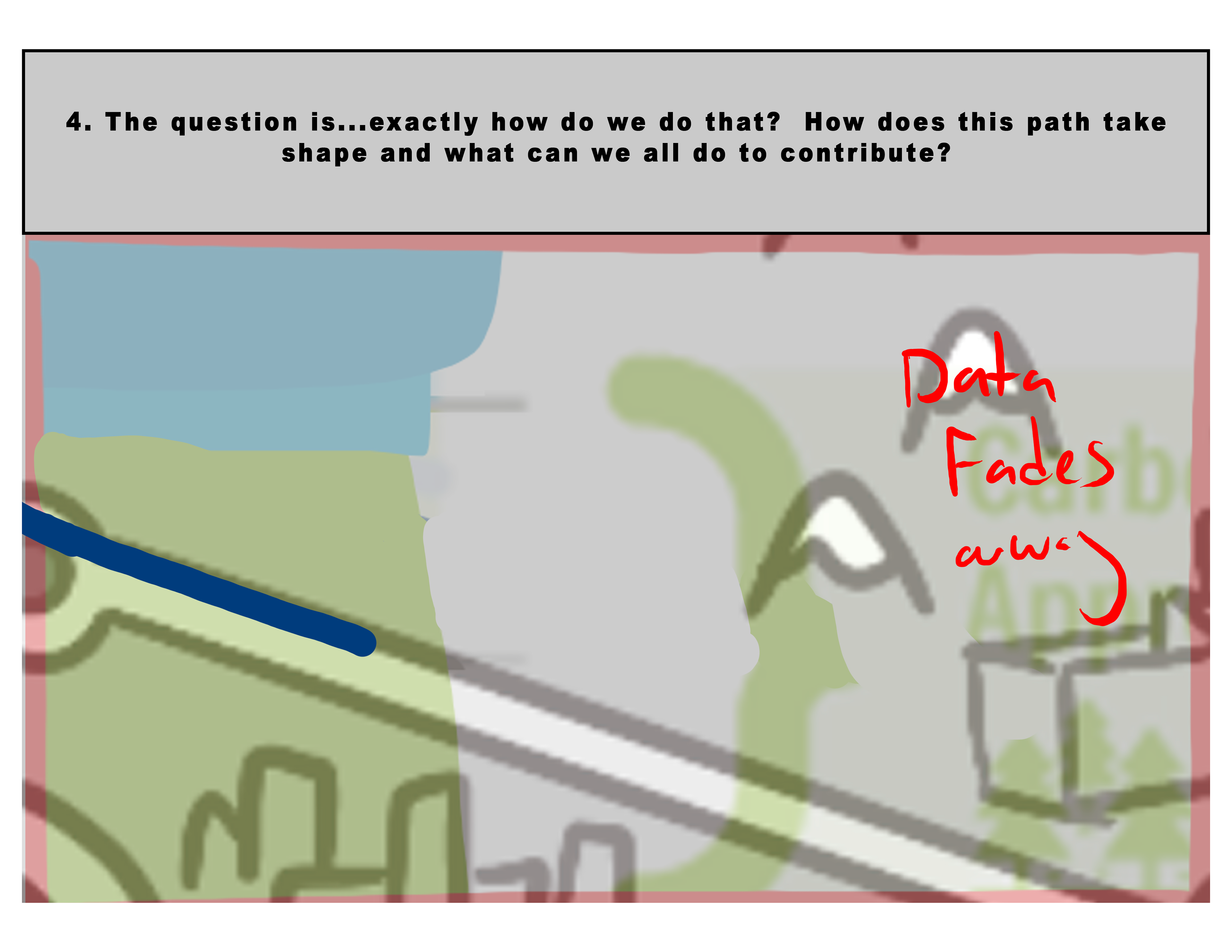
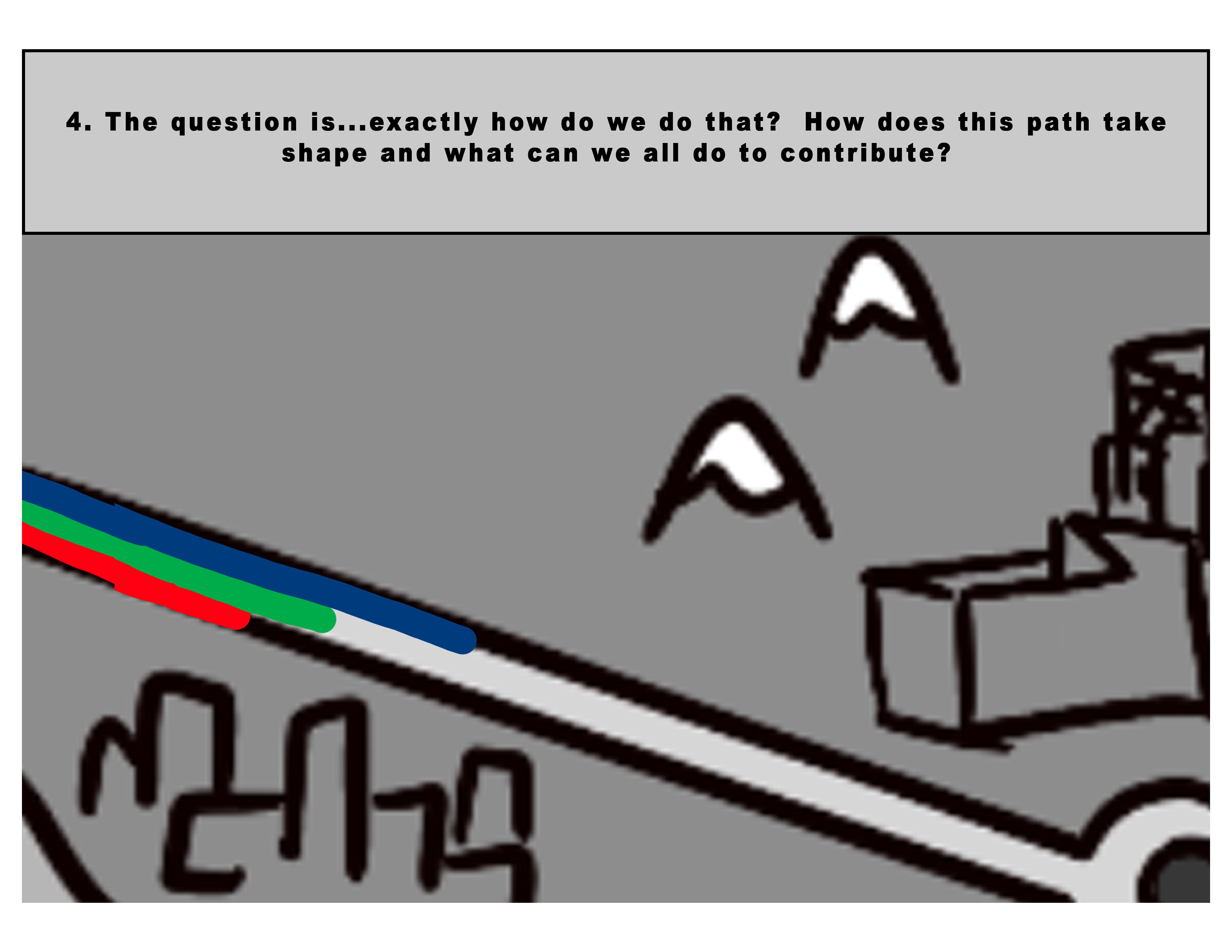
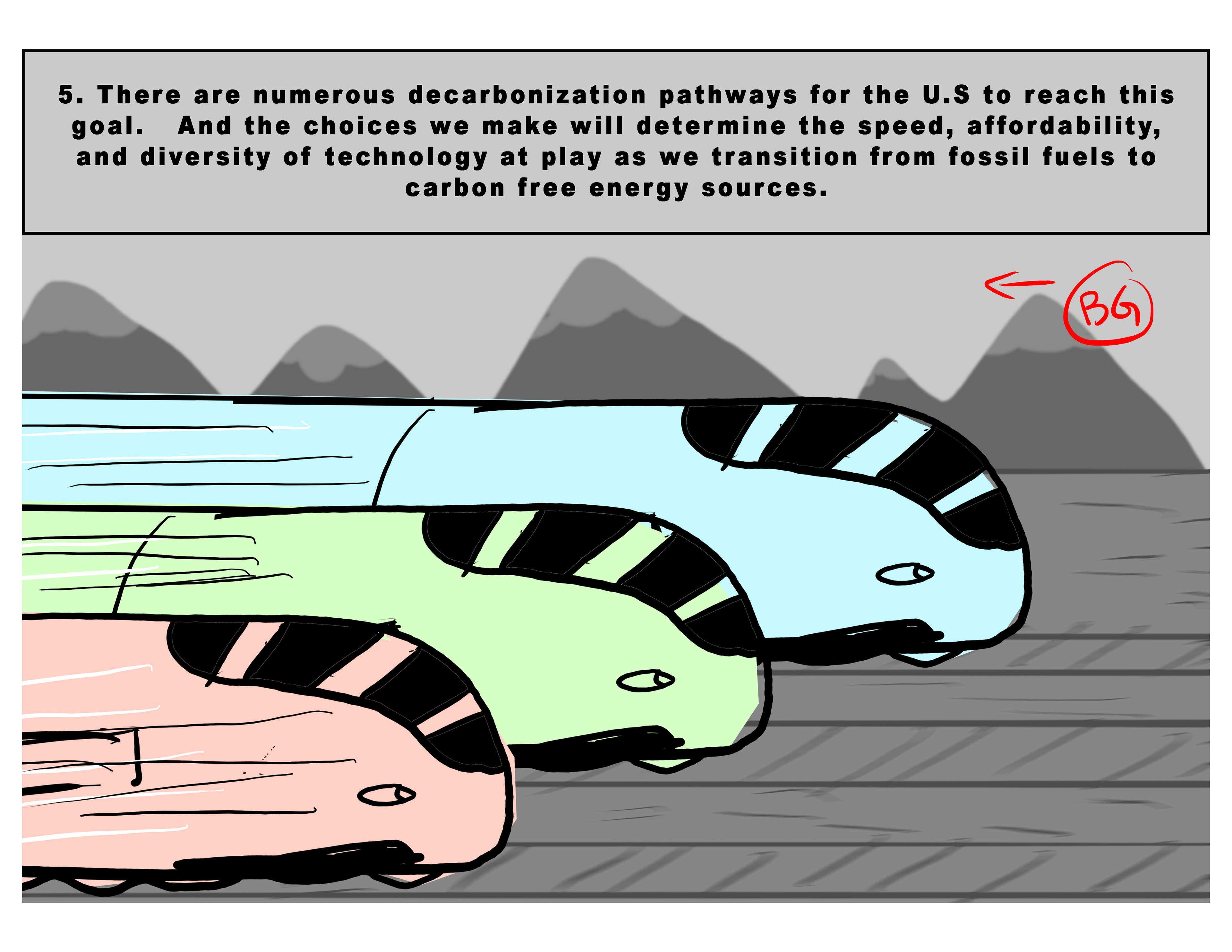
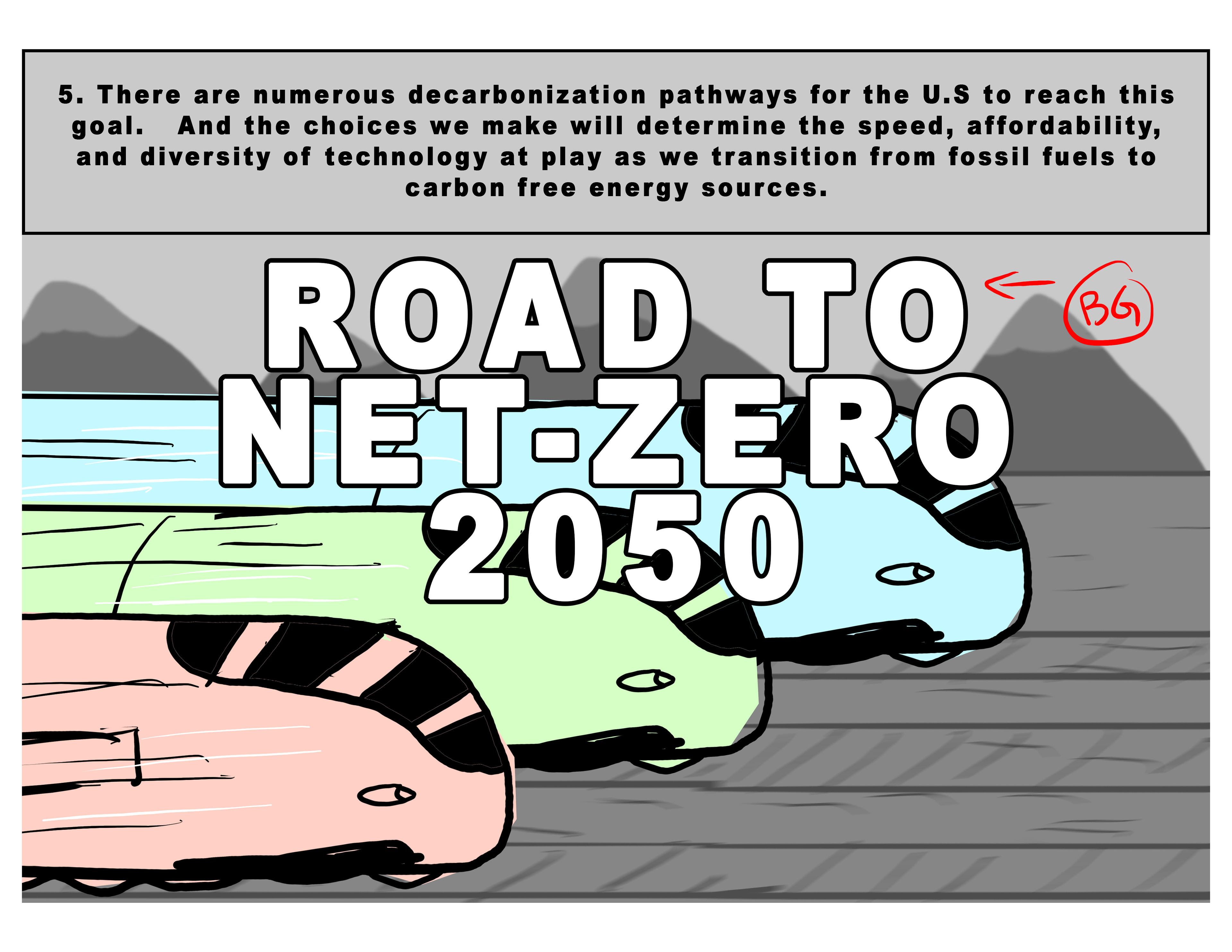
This except from an early draft of storyboards details an opening sequence.
Here we see one of our trains being boarded by a mother and daughter. The train is already full of passengers preoccupied by their mobile devices, which would serve as a transition to a carbon emissions graph. We had the idea of dovetailing from this line graph to a transit map and into a title card, with our speeding trains as a backdrop.
Here we see one of our trains being boarded by a mother and daughter. The train is already full of passengers preoccupied by their mobile devices, which would serve as a transition to a carbon emissions graph. We had the idea of dovetailing from this line graph to a transit map and into a title card, with our speeding trains as a backdrop.
Concept art and Character Design
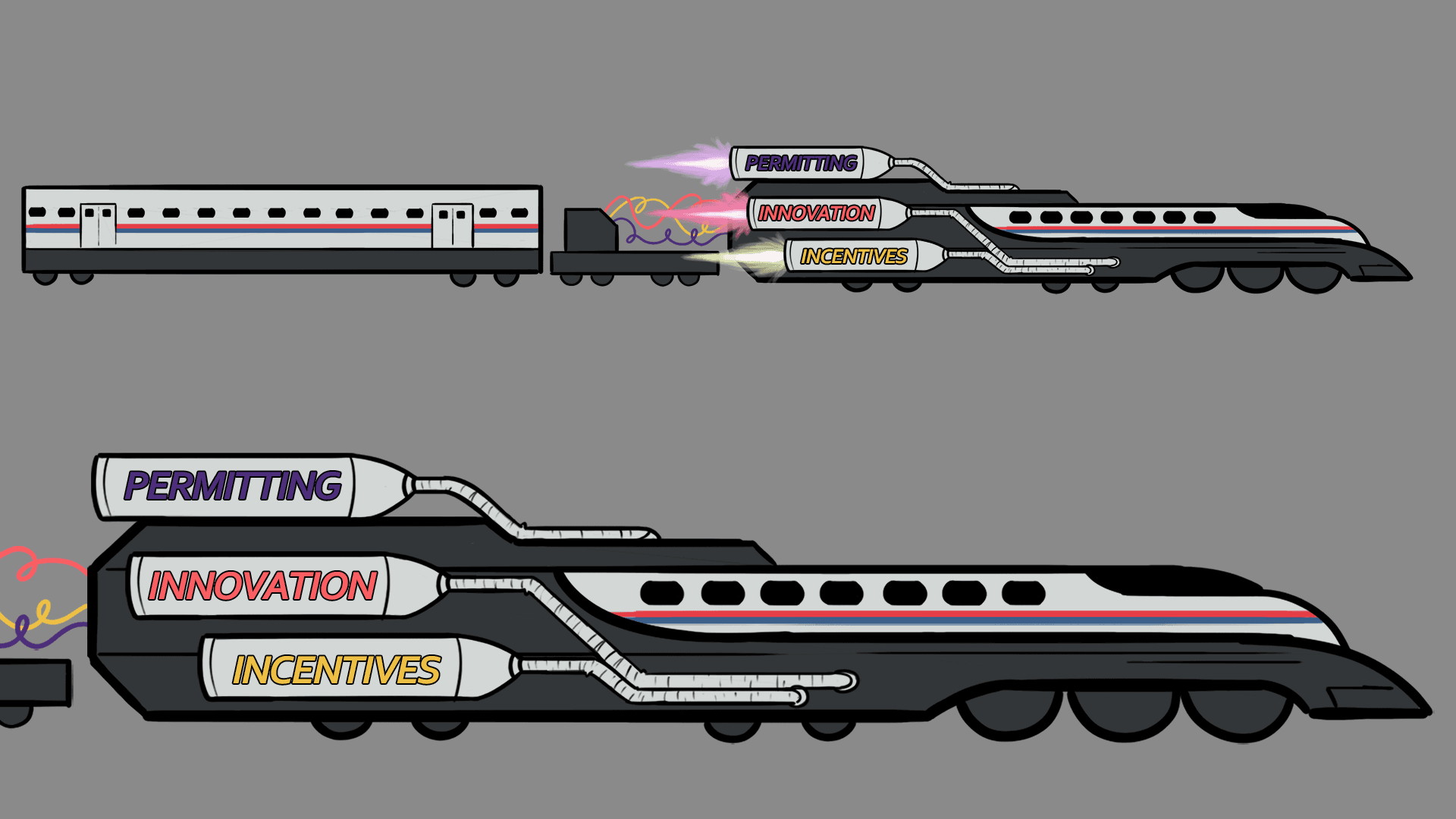
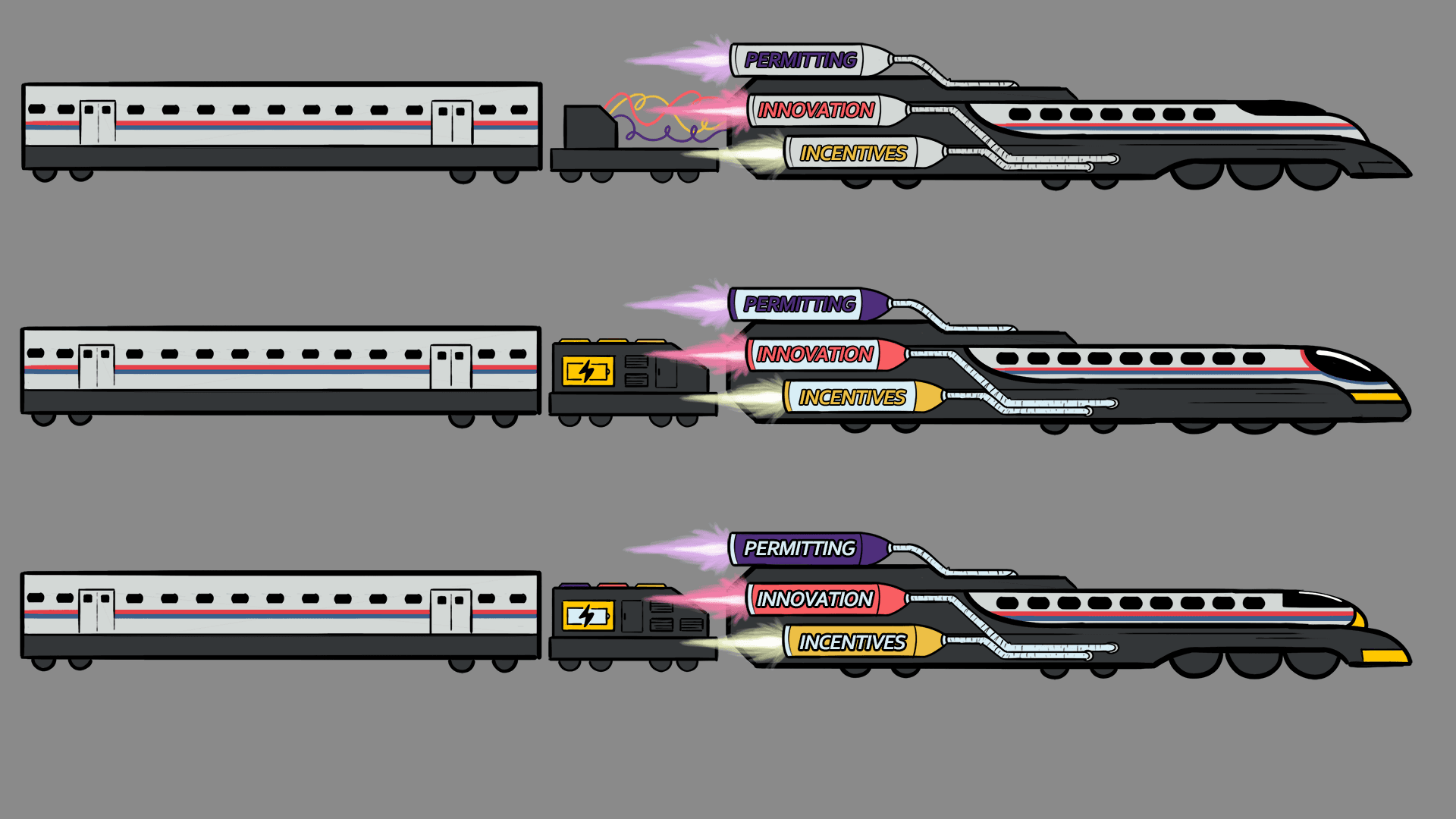
Our three trains later morphed into a single train outfitted with three engines, each of which represent the key factors driving us towards Net Zero. The design sports an updated color palette as per the client's direction.
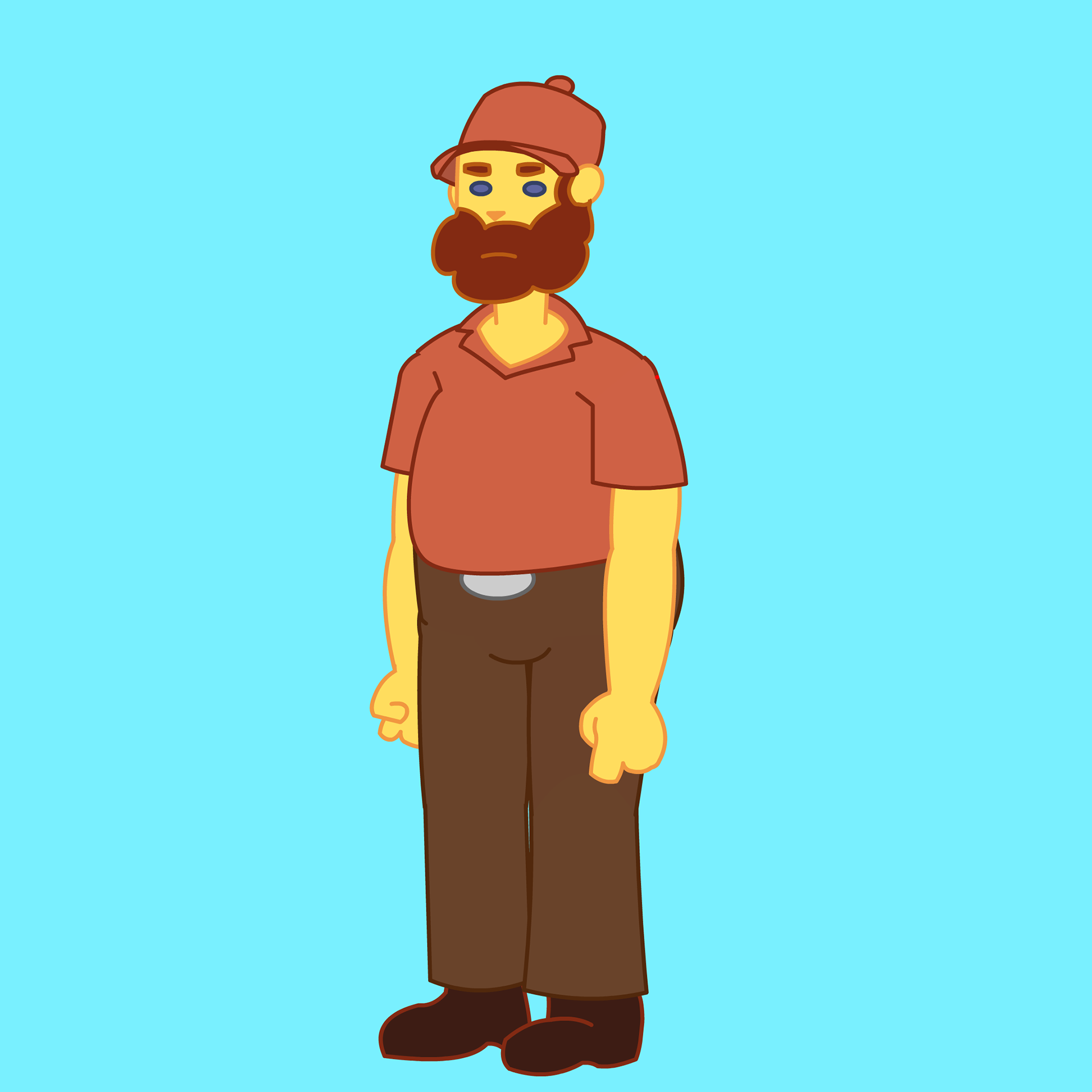
Blue Collar Worker
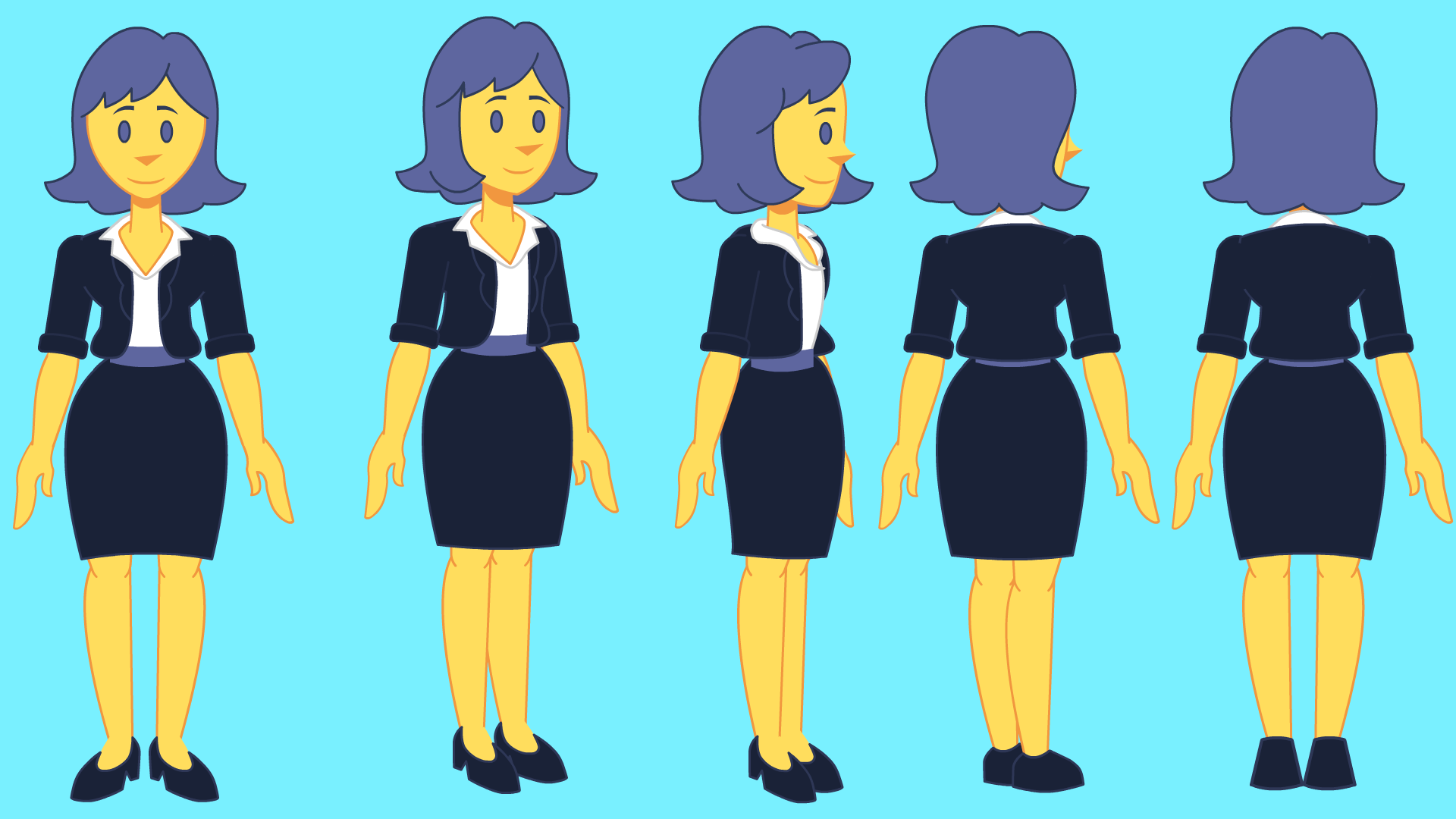
Working Mom

White Collar Worker
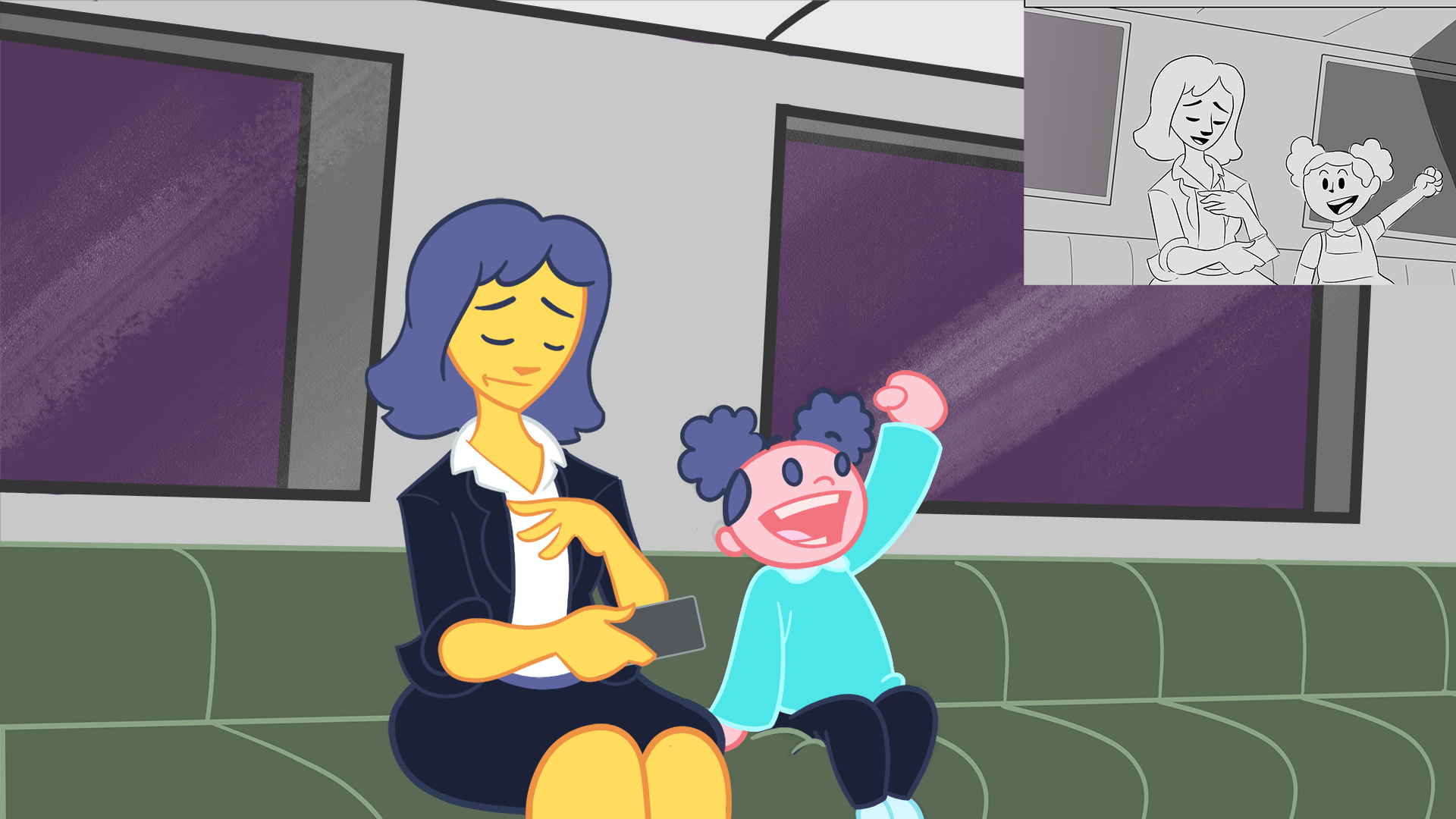
Mom and Daughter in Train Cab

Mom and Daughter get onboard
As we decided on our cast of passengers, we built out rigs for each based on early concept art designs of mine.
Animatic
I managed a cascading workflow, with design happening concurrently with story an animatic work. We would populate the animatic with finished assets piece-by-piece until we arrived at the finished animation.
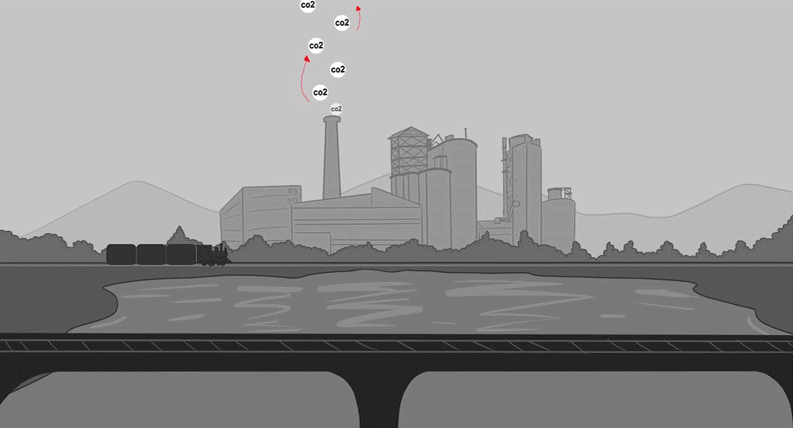
Innovation
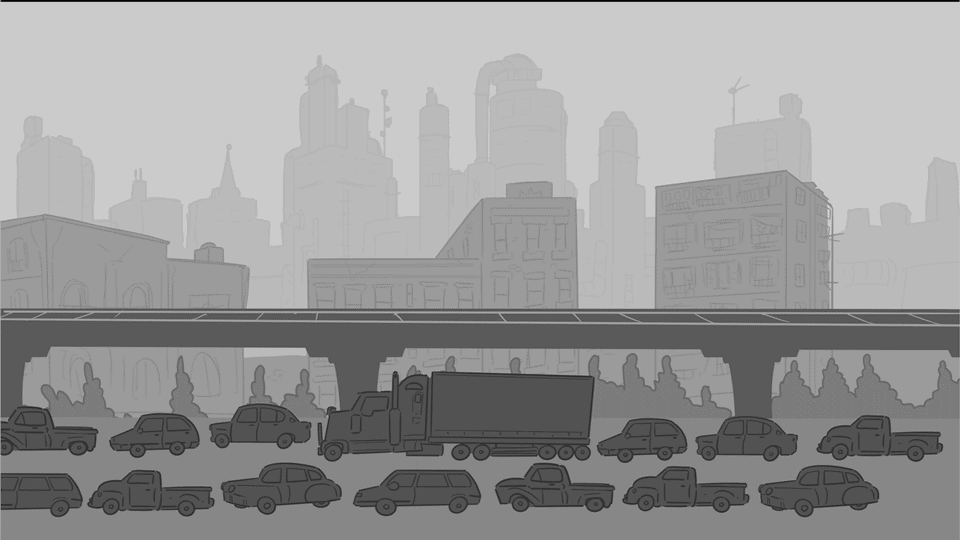
Incentives
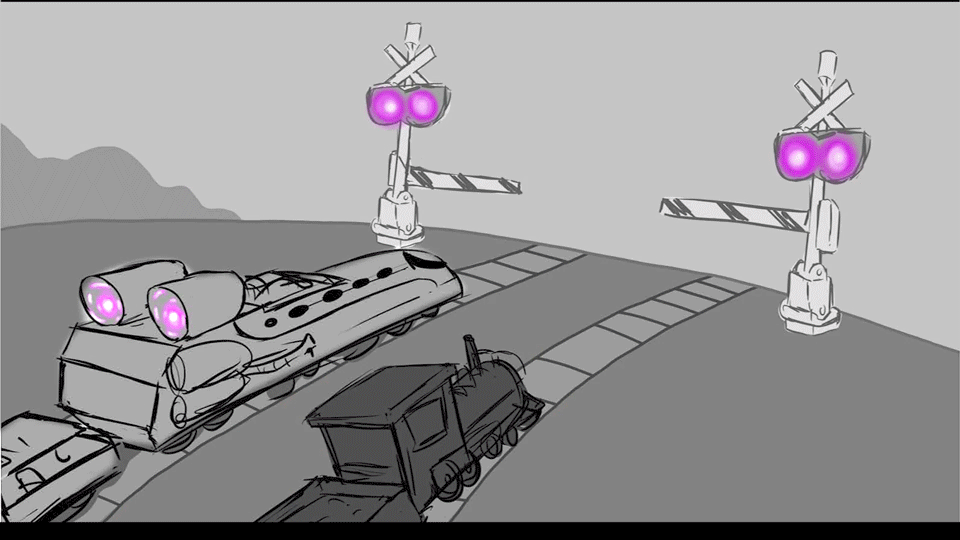
Permitting
These more refined animatic shots served as blueprints for background art and finished animation assets that were composited together in post.
Rejected Concepts

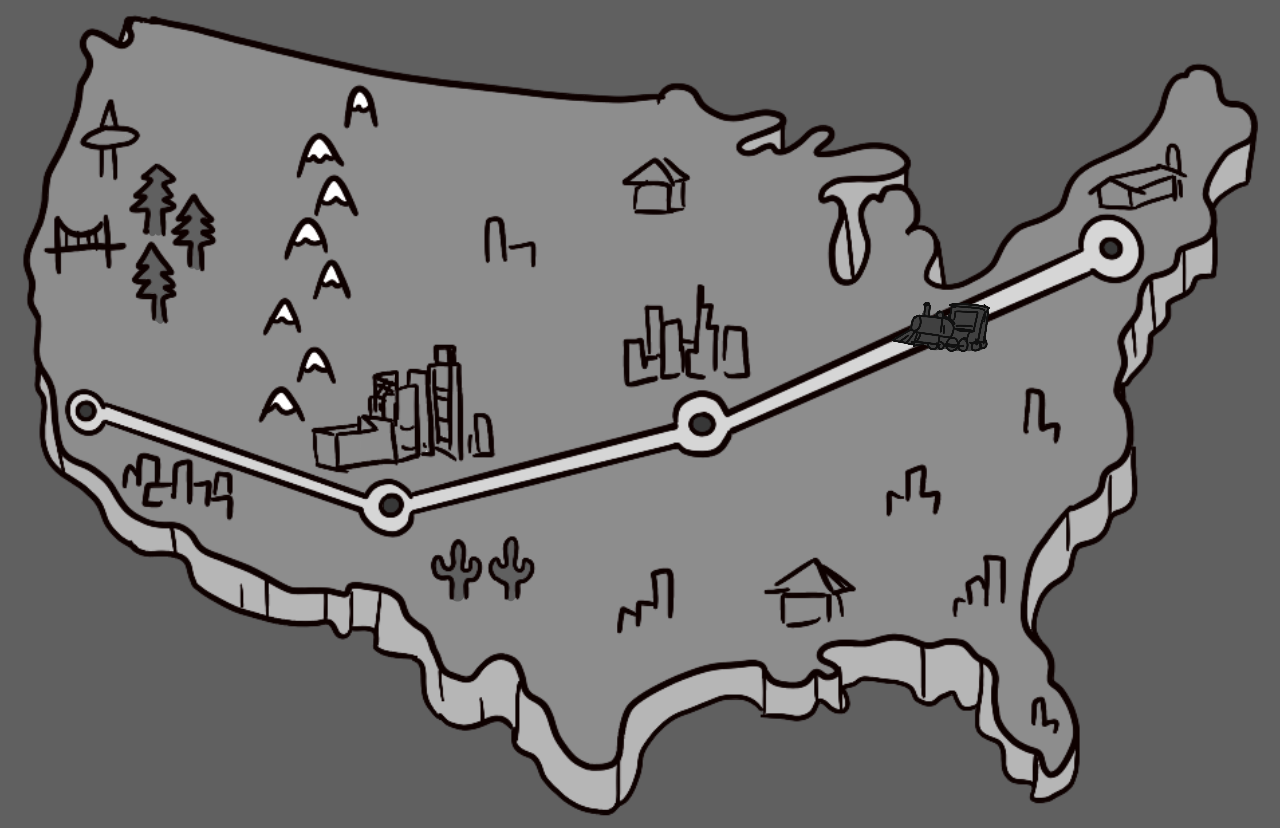
In the early stages of development, there were meant to be three trains traversing the US, that we would cut to in a manner reminiscent of videogame overworld screens



Train conductor trio of characters that was scrapped during the storyboard process


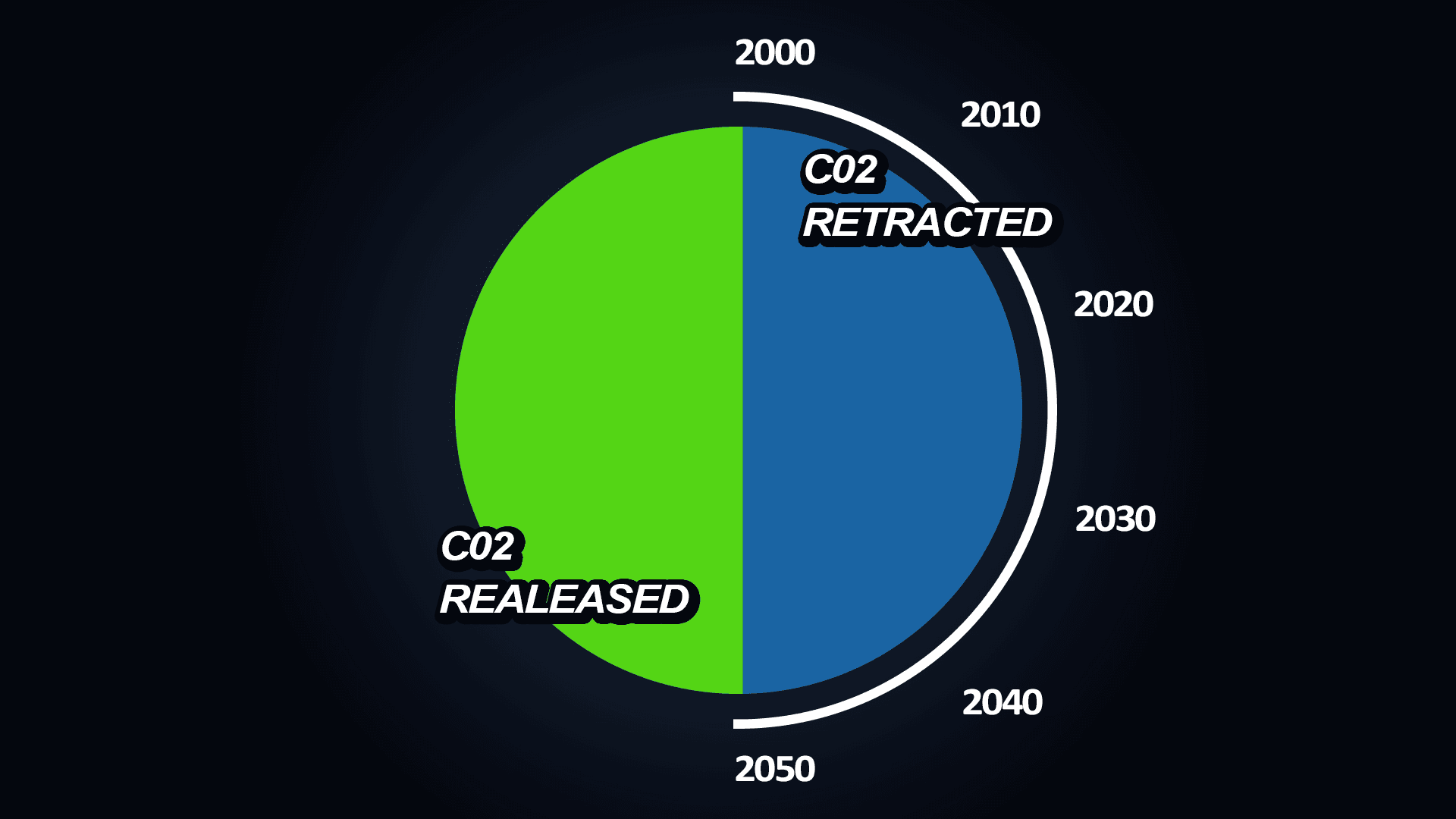






Carbon capture tech demo visualization that was later replaced by a less complex shot
Delivery
Throughout this project I did my best to stress clear communication, regular progress reports, and true collaboration.
The result ended up being more than a little different from the initial concept we had in mind, but one that proved to be more effective for it.
I’m proud of what we accomplished here, and grateful for the experience.
I’m proud of what we accomplished here, and grateful for the experience.